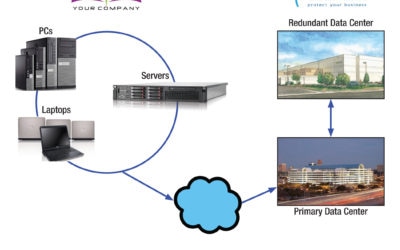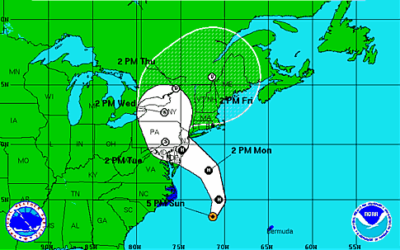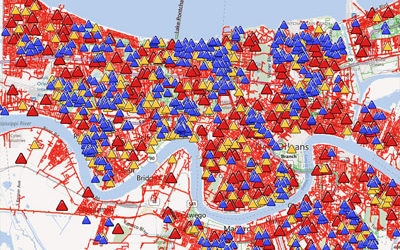It’s that time of year again, when the analysts analyze and publish the Gartner Magic Quadrant insight into products and solutions ahead of a calendar year budget cycle. This is for good reason, although Gartner recommends against buying solely based on what is farthest top and right, stating that niche and visionary products may be extremely well-suited for a company’s needs. Veeam Software is an unusual participant in the quadrant, given that they entered it in the visionary section, and were the first company to do so with only a virtualization offering, being “built for virtualization.” All the other companies had solutions to protect physical environments or were created to protect physical and then bootstrapped or developed into the virtual space.
One of the items that rings true to customers of all sizes is the ease of implementation and use of the products. Complex implementation and management/maintenance of products translates to more overhead and dollars (e.g., higher TCO, higher risk) and has remained a pain point for many products. Again, Veeam has remained the exception, with ease of implementation and use being a core consideration for customers. Implementation costs are lower, ongoing realized costs remain lower, yet satisfaction and the “wow, this actually works” factor remains high.
Since their first appearance on the Magic Quadrant, Veeam has continued to innovate and be thought and product leaders in the market. Veeam has been a “backup and replication” product since early on, while most products were simply labeled “backup and recovery.” I always found this a bit odd, because if you couldn’t recover a backup, then what good was it? The bigger “a-HA!” for Veeam came when customers learned they could actually recover entire virtual machines—successfully, mind you—within minutes. Gartner took notice.
Fast forward a few years, and cloud offerings for offsite data storage became the new buzzwords. Cloud capabilities became a new measure in the MQ. Why should companies spend the money on Disaster Recovery equipment and multiple locations when they could easily write data to the “cloud” and let the “cloud people” deal with it? The major “cloud” companies began clawing and scratching and innovating, but for many customers, it still comes down to a few items: cost, ease of use, and reliability (we’ll throw service and support in there as part of it.) Customers quickly realized the “cloud” can be a bit, well, cloudy. It is easy to have a “throw more storage at it” attitude, because that generates revenue. Many customers suffered with costs related to restoring data, and the help they received from the cloud provider, especially if the bandwidth or data limits had been met or exceeded according to contracts.
At Global Data Vault, we realize the pain points of something that should be easy and cheap, and maybe a little magical. We adopted the Veeam messages of “it just works” and “always on” and added our own: It’s always our problem. We make offsite data storage for both backed up and replicated virtual machines easy. By utilizing Veeam Software, one of Gartner’s leaders, we guarantee service and delivery our customers expect, all with simple and transparent billing and reporting. With lower overhead and lower TCO, Global Data Vault excels in satisfaction and providing a truly customer-centric cloud experience.
More Backup and Disaster Recovery Posts
Mobile disaster recovery trucks – are they a good idea?
Service trucks have never been as en vogue as they are today. Nearly everyone is familiar with the mobile trade shows and health care stations, and more recently become adept at Twitter stalking the locations of the ubiquitous food trucks doting the urban landscape....
The Benefits of Cloud Disaster Recovery
In our earlier post, Cloud Disaster Recovery – Why the hype?, we took gave a basic definition of cloud disaster recovery and took a look at how Cloud DR compared with traditional disaster recovery solutions. In this second installment, we discuss the benefits of...
Cloud Disaster Recovery – Why the hype?
Cloud Storage Services There’s a lot of buzz around cloud services. Everything from accounting to telecommunications to everyday computing with virtual desktops, it’s all moving to the cloud. It’s not the wave of the future - it’s what’s happening now. Companies are...
What went wrong in the days before Super Storm Sandy?
“Not only were many firms unsure about whether their galoshes were waterproof,” Bart Chilton, the regulator at the Commodity Futures Trading Commission said, “they hadn’t even tried them on.” Chilton’s sharp-tongued critique is in response to the apparent lack of...
Data Center Exposure and Recovery in New York City
Hurricane Sandy provided a fascinating opportunity to study the both the level of disaster planning and the resilience of New York City data centers. This article will examine a) what actually happened, b) what was the risk, and c) what are the lessons learned. What...
Data Protection Audit – Systems, Devices and IT Operations
Your data protection audit lays out the plan that enables you to sleep at night knowing that data loss couldn’t destroy your business or be a costly and burdensome event. In the previous installment of our three part data protection audit series, we looked at the...
Data Protection Audit Planning
In part one of “How to plan and execute a data protection audit,” we discussed the importance of user participation in the design process of your data audit plan. In this installment, we go into more detail about the questions you need to ask about your business...
Hurricane Impact Assessment: Isaac in New Orleans
Now that Hurricane Isaac is in our rear-view mirror, it’s time to assess the disaster damage. We monitored and shared the New Orleans power outages on Global Data Vault blog day-by-day, but we censored the wrath pointed at local energy provider Entergy to return the...








0 Comments